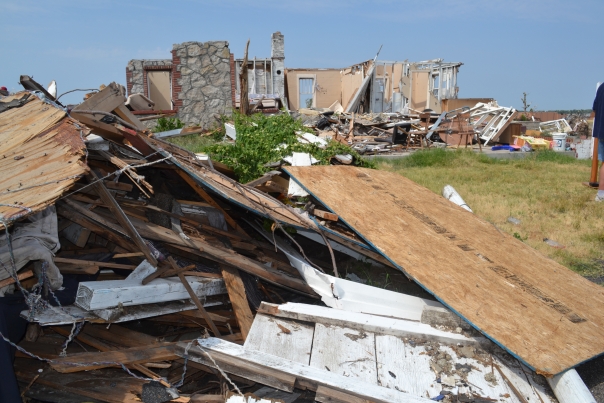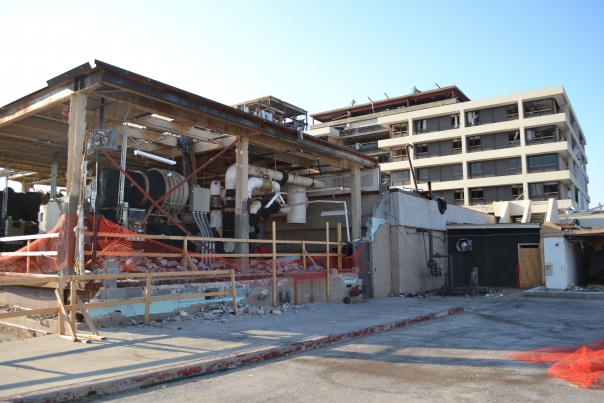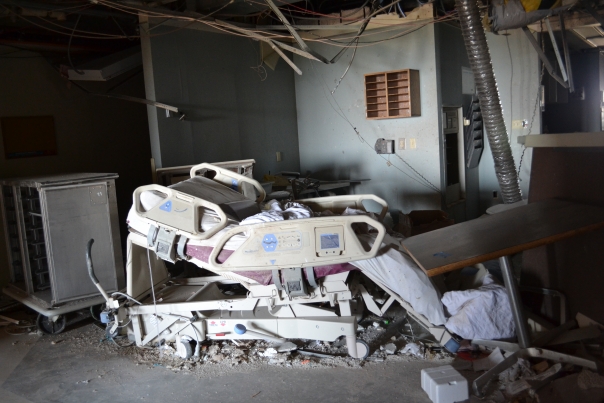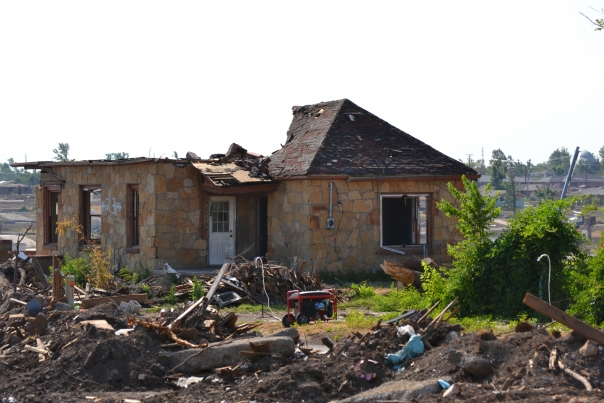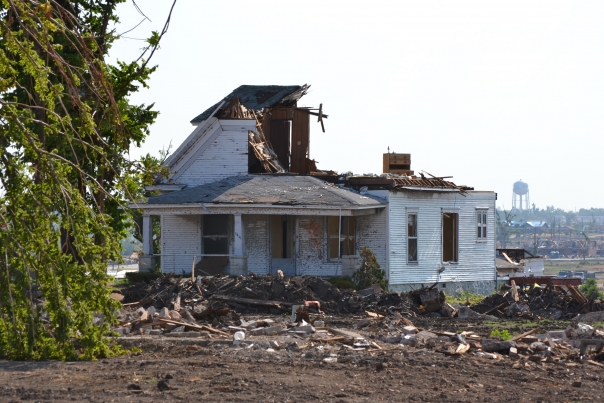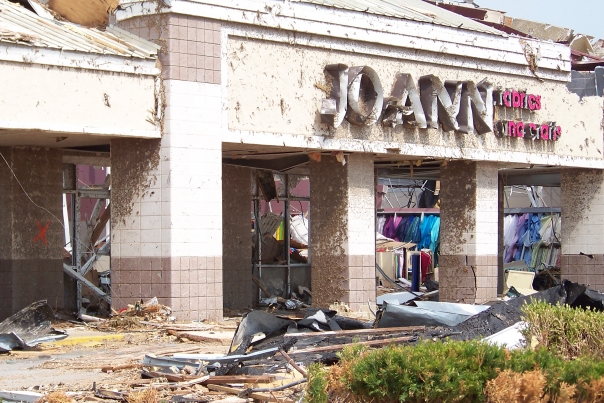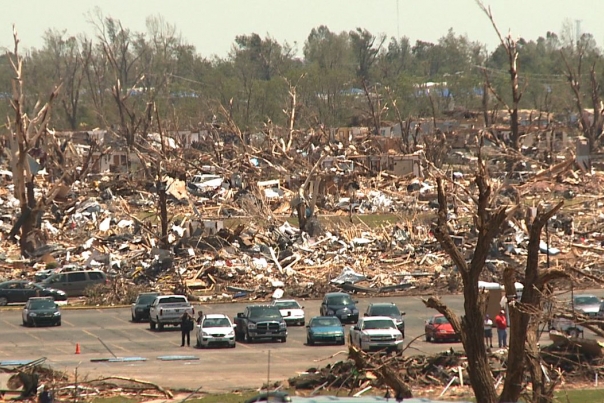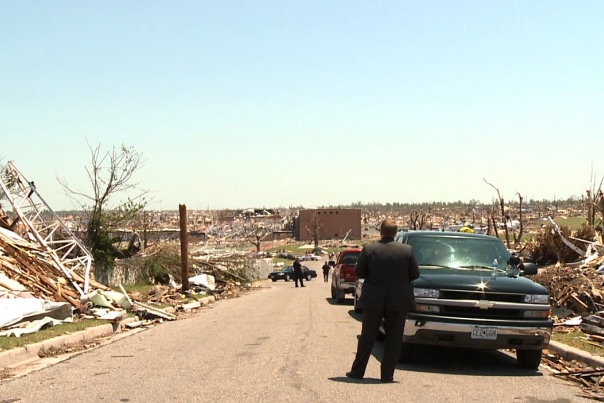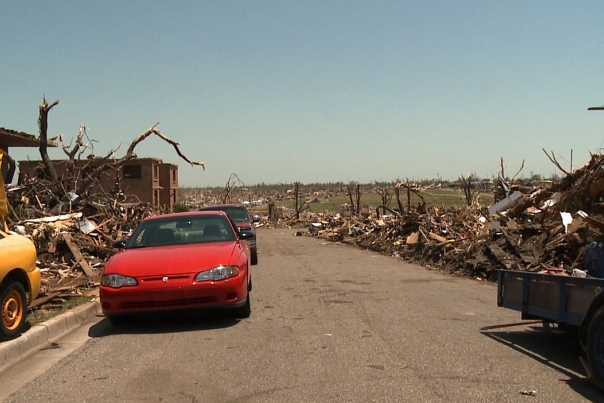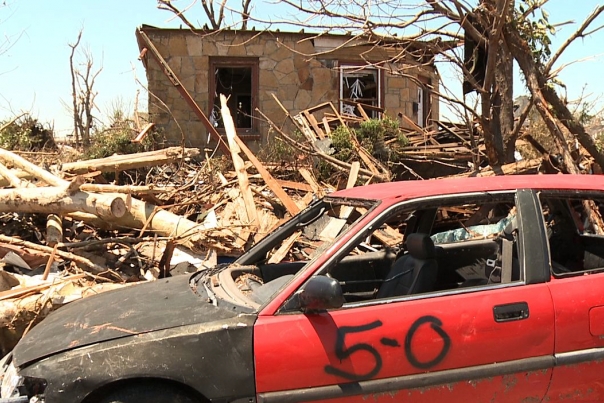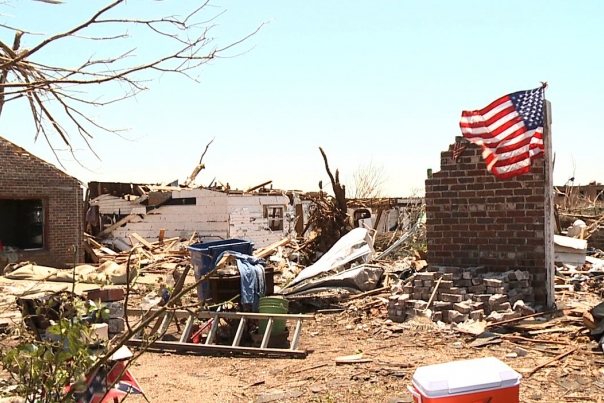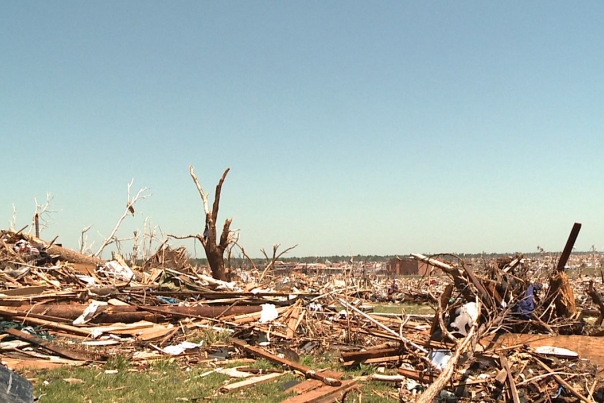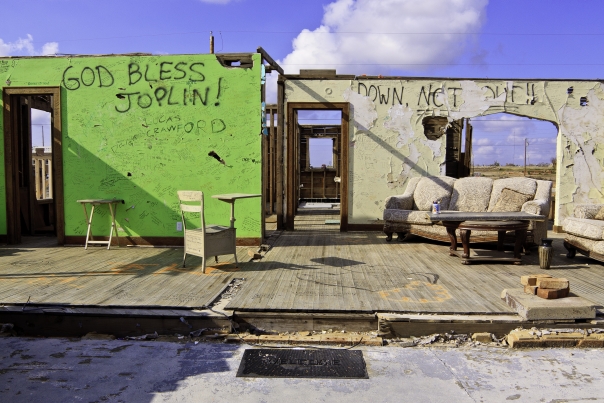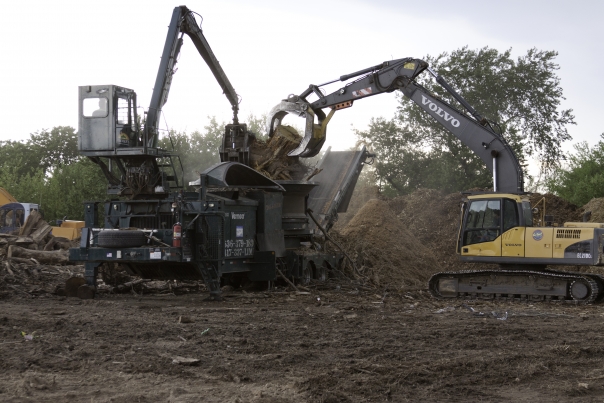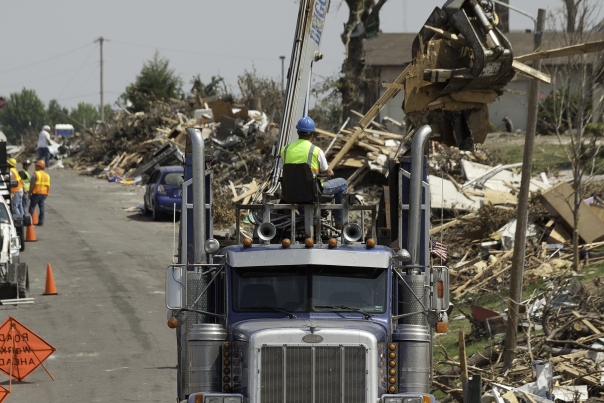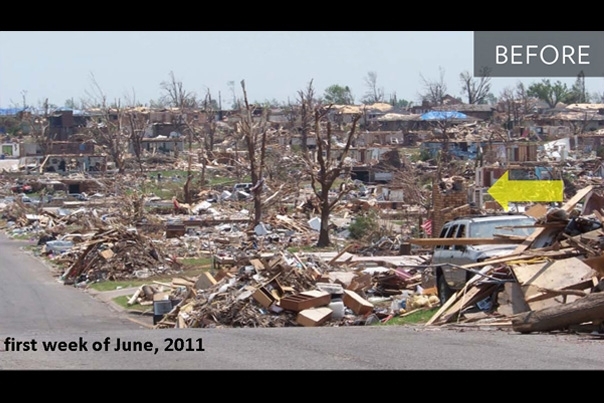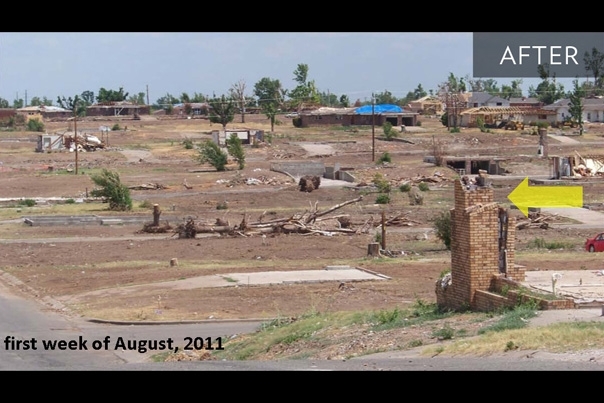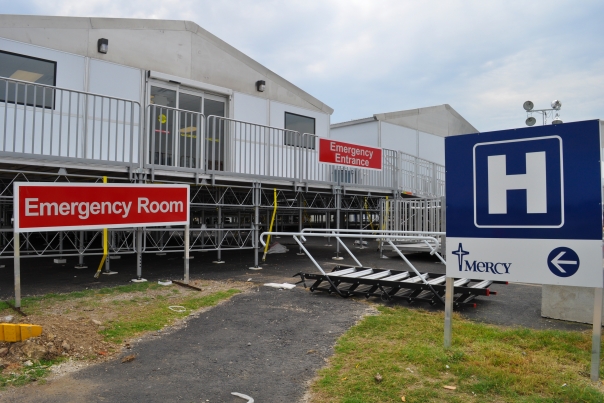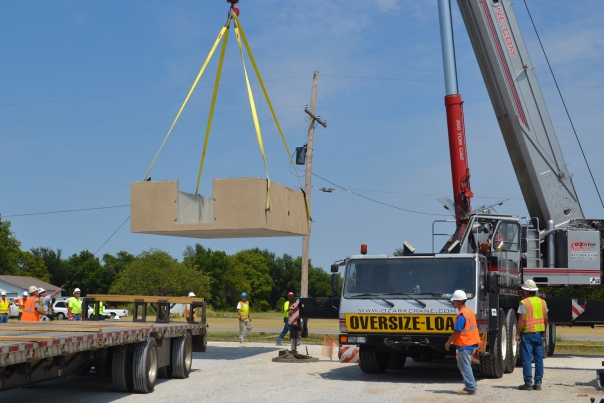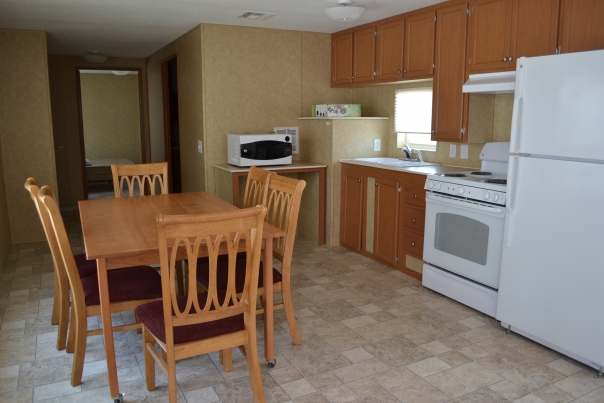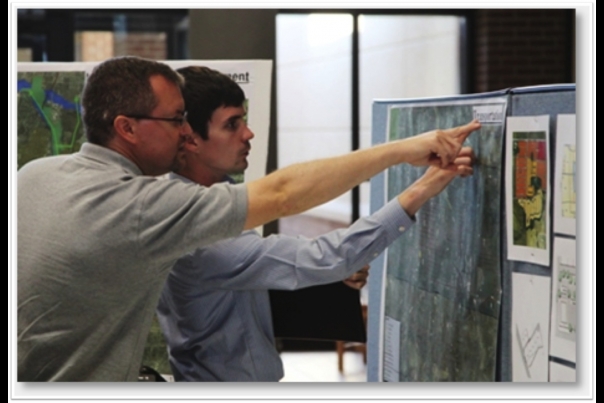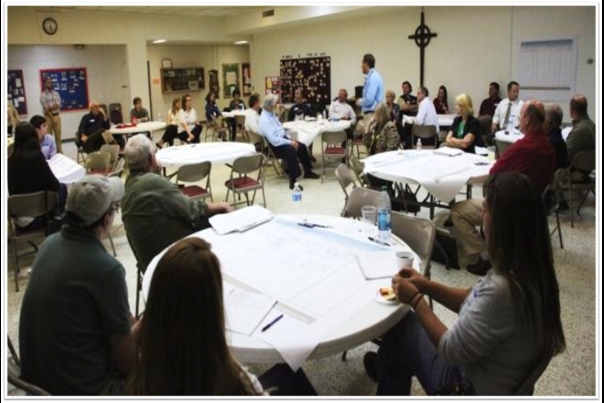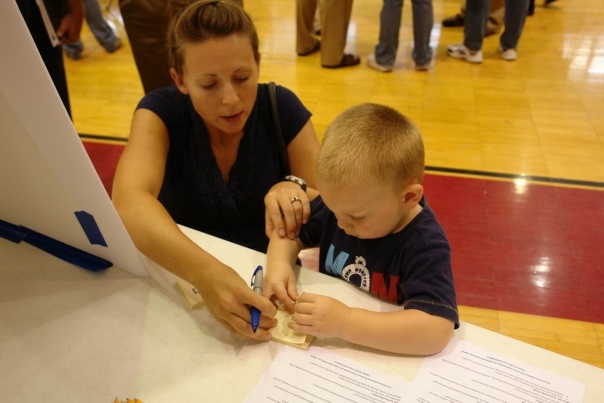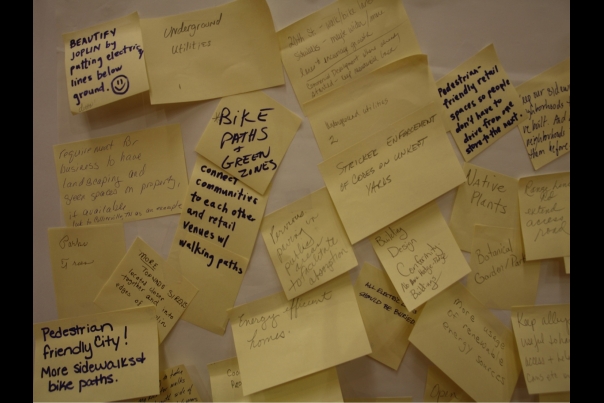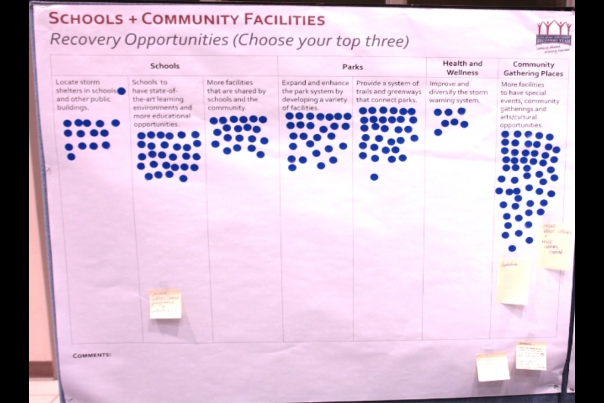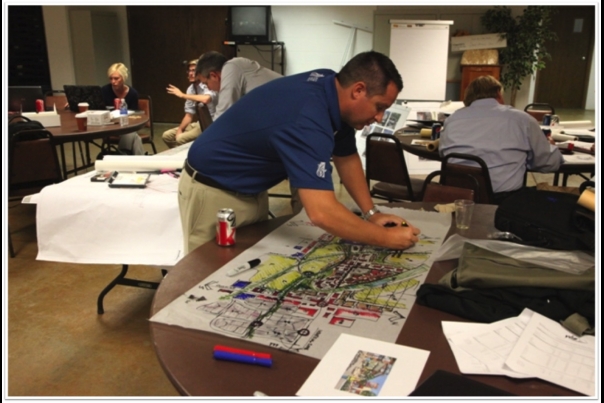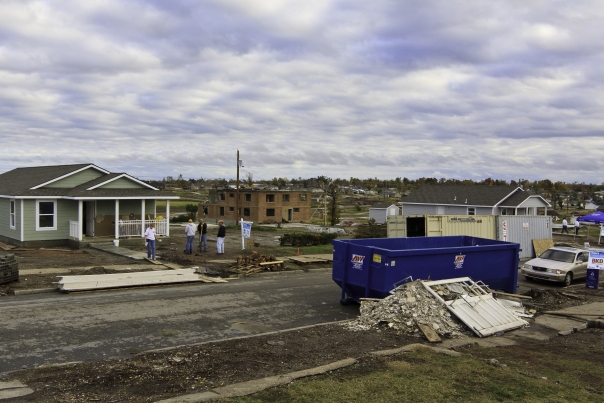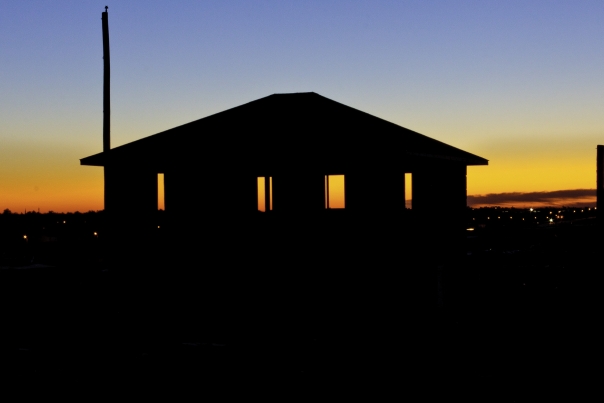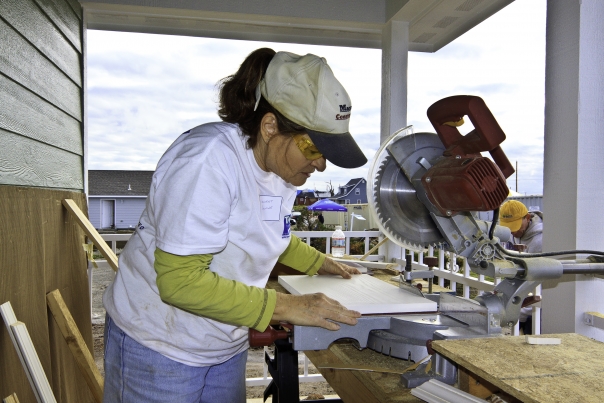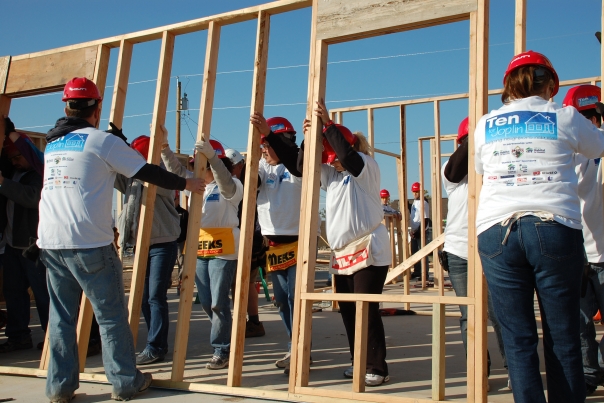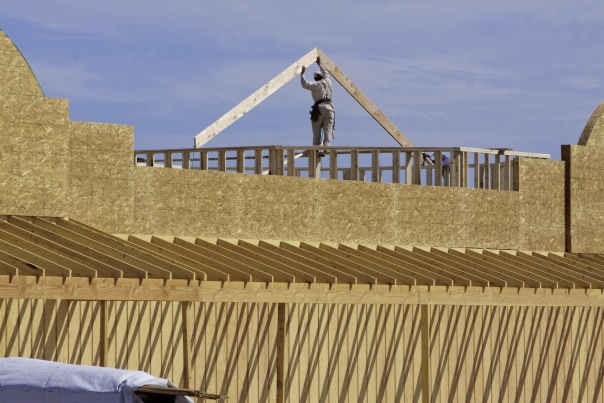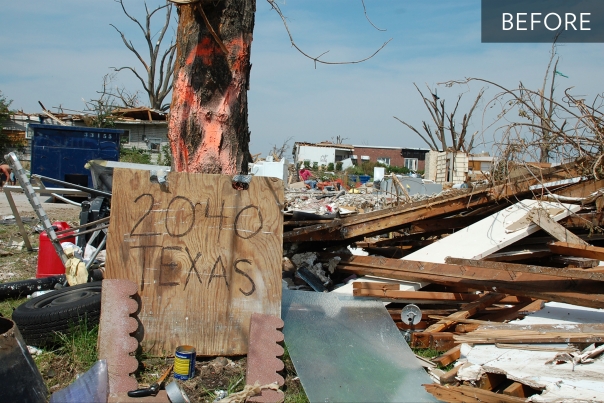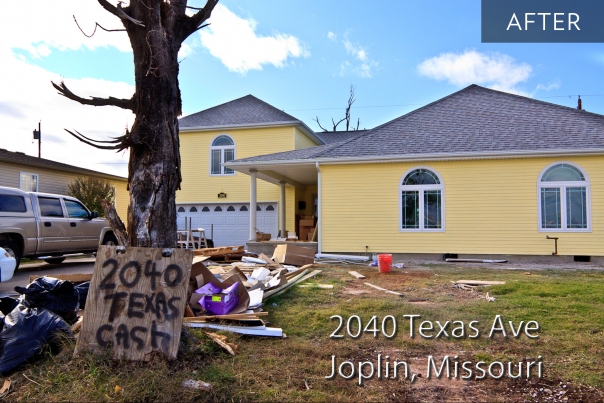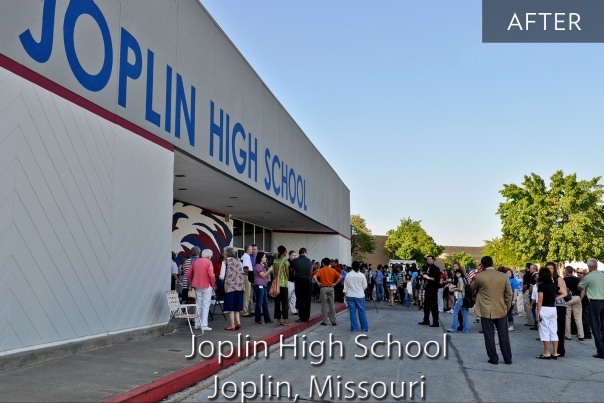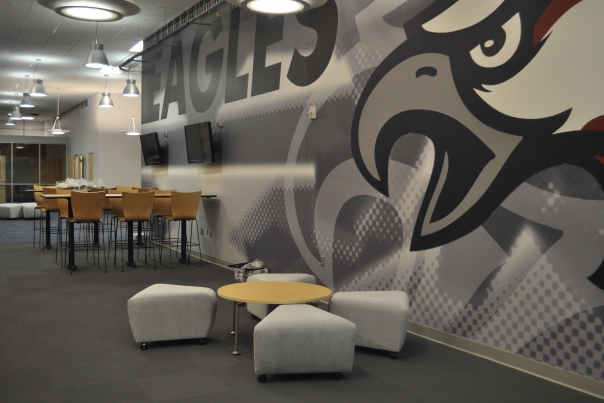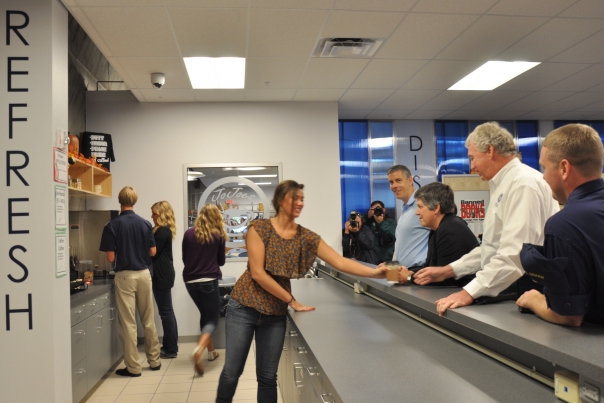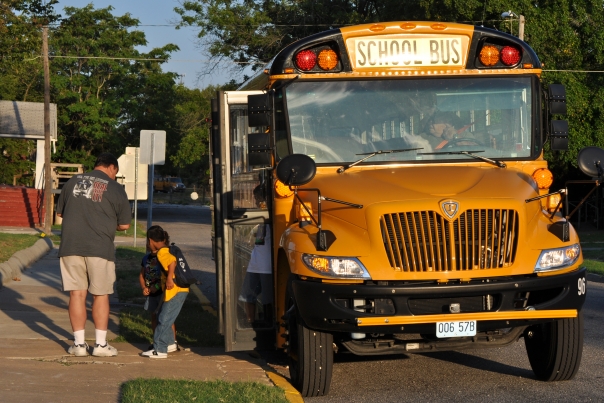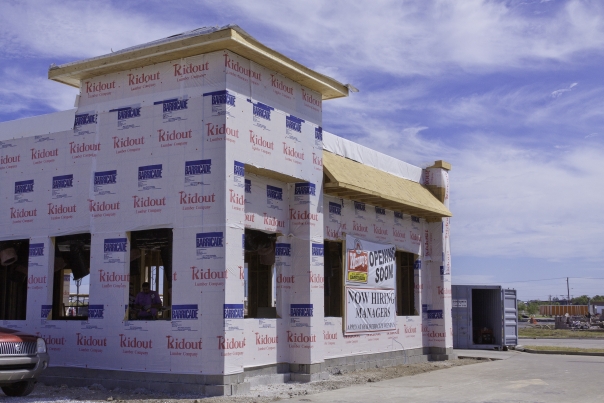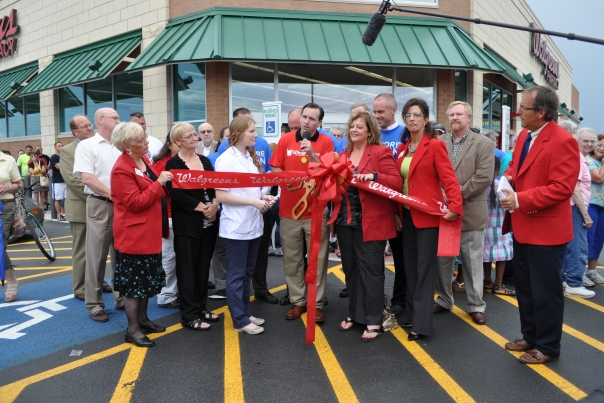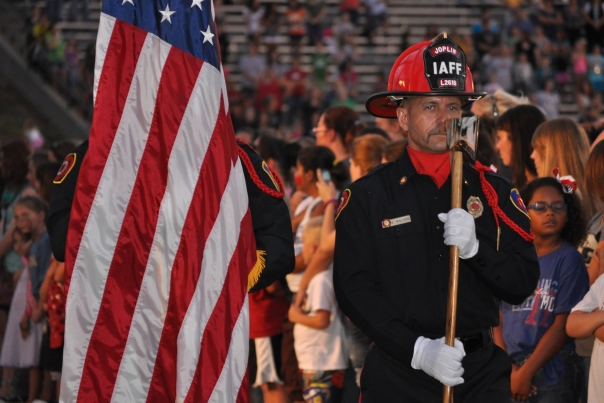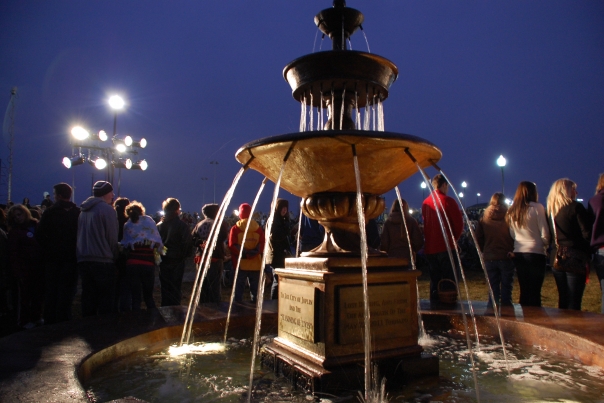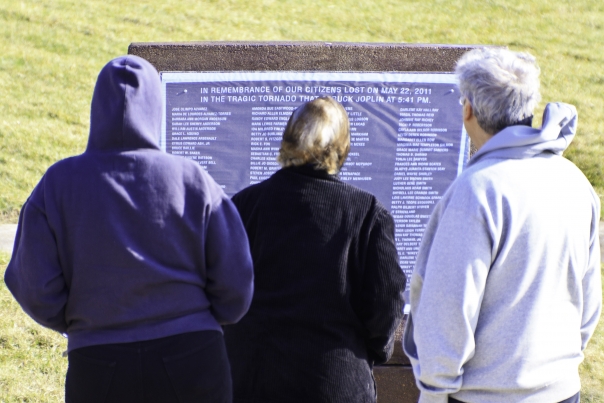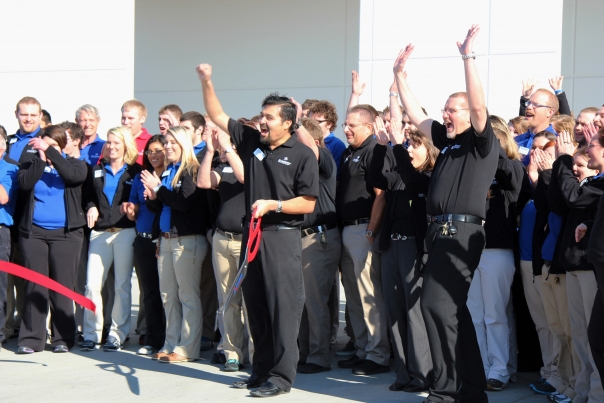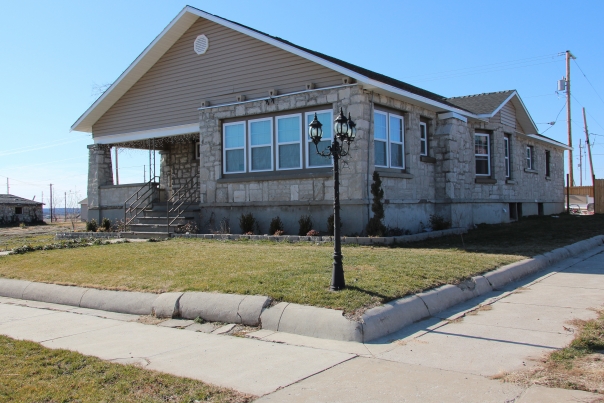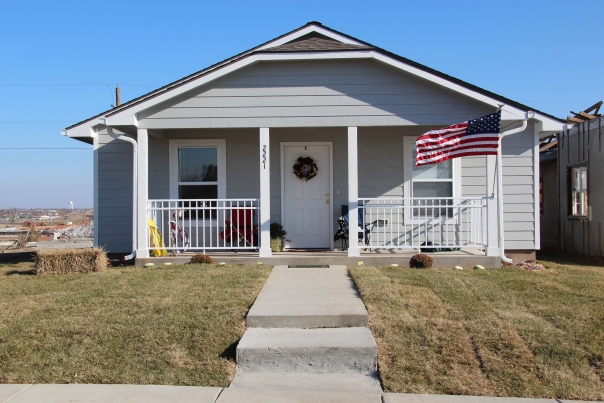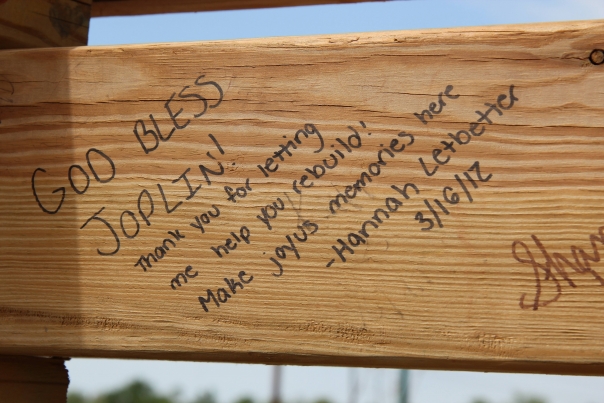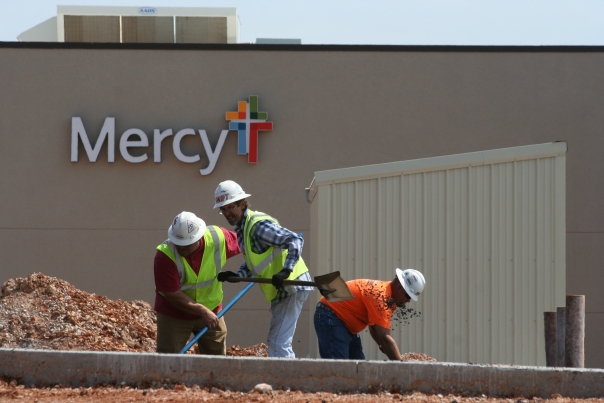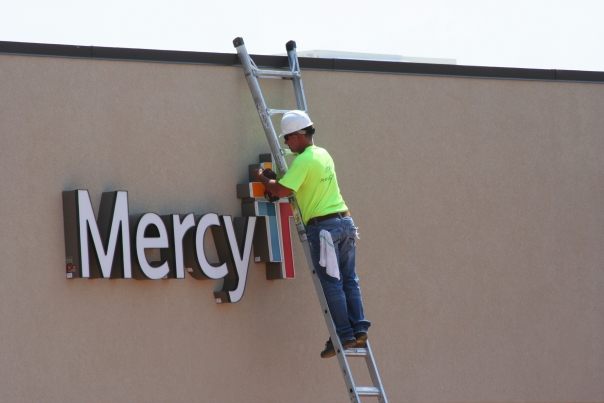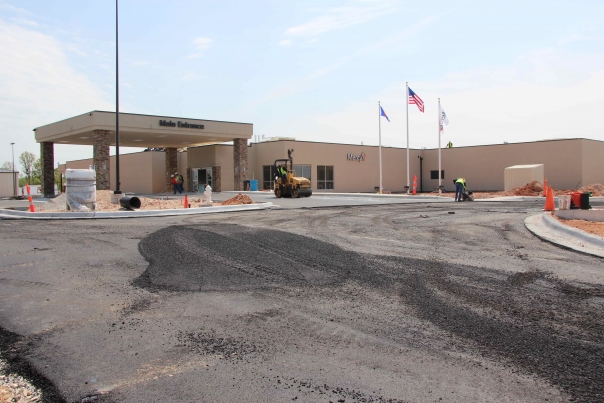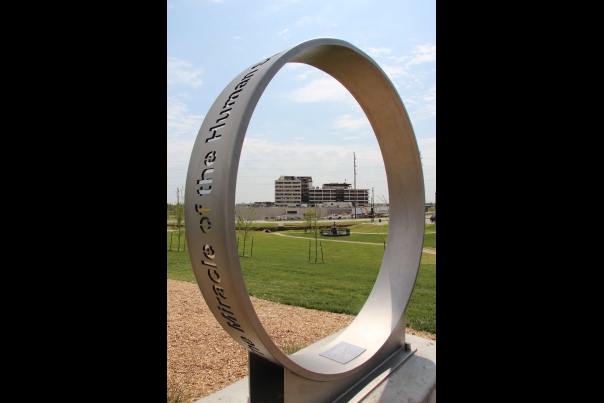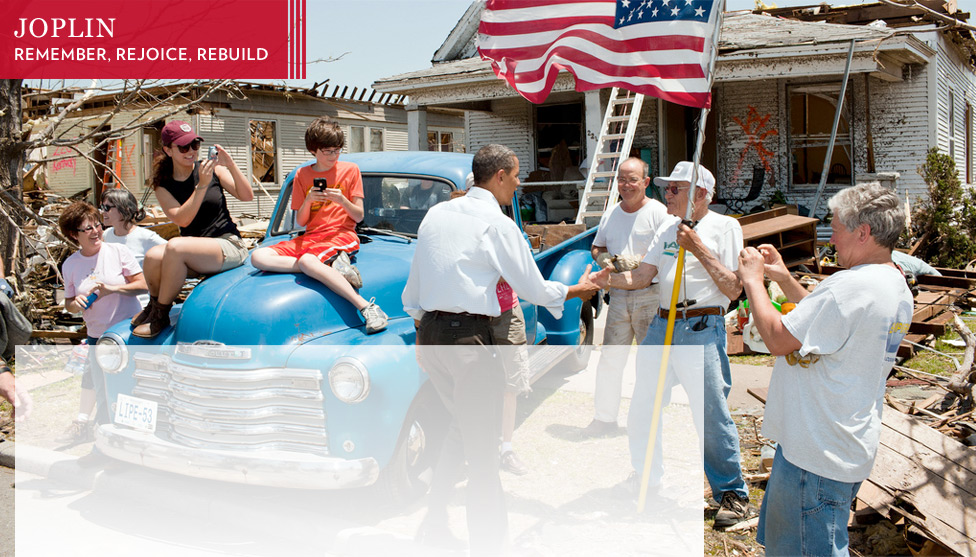
Joplin: One year later
Tornadoes are measured by the strength of the wind they produce. After a storm, meteorologists, weather researchers, and civil engineers will examine the field of damage and make a determination about where a particular tornado falls along a metric called the Enhanced Fujita Scale. The scale is broken into six parts. At the bottom end of the scale, an EF0 tornado might bring down tree limbs. At the other end of the scale, an EF5 tornado has the strength to tear buildings from their foundations and carry the debris through the air.
The tornado that hit Joplin, Missouri on May 22, 2011 was an EF5.
It began at 5:41 PM local time and lasted for 32 minutes. It first touched down in the southern part of the city, near the intersection of JJ Highway and West 32 Street, and tracked eastward, causing damage for 13 miles. At its widest point, the path of the tornado stretched a full mile. As the storm moved through Joplin, it gained strength.
More than 15,000 vehicles, including heavy buses and tractor trailers, were picked up and carried by the winds—some for hundreds of yards. A team from the National Weather Service found vehicles that had been rolled into balls of bent metal and broken glass by the force of the storm. In parking lots, concrete barriers designed to stop cars, each of them weighing 200-300 pounds and re-barred into asphalt, had been plucked into the air and tossed as far as 60 yards.
That night, there were 183 patients at St. John's Regional Medical Center. The hospital took a direct hit from the tornado. Every window in the building was blown out, and the top two floors were ripped from the structure. Doctors and nurses had only minutes to pull patients from their rooms and into hallways before the storm struck, and six people died. Because there were concerns that the structure might collapse, once the tornado passed, the building was evacuated. Later, there would be reports that the entire hospital had been moved four inches off its foundation.
One week after the storm, the National Weather Service estimated that 6,954 homes had been completely destroyed, while 359 homes suffered major damage. In addition to the hospital, their report contains a list of other major buildings damaged or destroyed, including, "several churches, elementary schools, high school, vocational school, two fire stations, a Walmart, Home Depot, large construction company with heavy equipment, nursing home, banks, a Dillon’s and other grocery stores, several gas station/convenient stores, Cummins generator building, electric power company sub-station, major cell and power transmission towers, and numerous one, two and three level apartment buildings." Their report describes steel trusses "rolled up like paper, and concrete walls toppled."
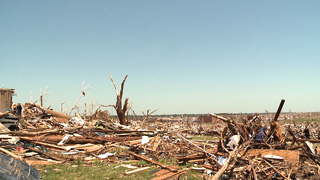
The destruction of Joplin High School took place just minutes after a graduation ceremony for seniors. The ceremony was held off campus, at Missouri Southern State University. When the tornado hit, around 150 people were still in the arena, and Dr. Kerry Sachetta, the high school principal, led those individuals into the basement. But others were already on the road or back in their homes. The tornado claimed the lives of seven students (including one of the graduates) and one high school staff member.
All told, 161 people died in Joplin as a result of the storm. Nearly 1,000 were injured. It was the deadliest tornado to occur in the United States since 1947. Because thousands of homes and businesses were destroyed in an instant, the number of people displaced or suddenly jobless was staggering. Because the winds brought down trees and power lines, the community's basic utilities were devastated. Even many of those whose homes were still standing were without power or phone service.
Within hours, Missouri Governor Jay Nixon declared the city a disaster area and activated the National Guard. President Obama mobilized the Federal Emergency Management Agency, and one week after the storm, he came to Joplin to see the damage for himself. At a memorial service, the President made a promise to the people of the city:
And in the past year, through the efforts of volunteers, neighboring cities and states, the government, and most importantly, the people of Joplin themselves, the community has made a dramatic recovery.
The opportunity for innovation
Sue Adams is the human resources director of a manufacturing company. On the night of the storm, she was at home with her husband. It had been a beautiful day, but just before dinner, her phone chimed to indicate that a tornado warning had been issued. When she looked out, she could see clouds gathering in the distance.
"You could see this horrific storm was coming through," she said. Sue went and cleared out the closet that she and her husband used for shelter, and then they waited.
"We could hear it," she said, "It sounded like a freight train in the distance. It was just a rumbling. It sounds like a thunder that just doesn’t stop. [We] knew there was a tornado somewhere."
It missed them.
Sue and her husband live six miles outside the city, and the winds damaged nothing—it hardly even rained. Once the storm passed, the couple loaded some shovels, rakes, and a wheelbarrow into their pickup truck and set off to see if they could help. They didn't get far before they found that the roads to Joplin were blocked.
Her company had recently hired a new engineer, who moved to Joplin just two days before the storm. It occurred to Sue that she might be the only person who knew where he lived so she and her husband headed to his apartment to check on him. They had to swing north to bypass the damage, and when they found her new employee, he was without power. They drove him to a store, got him some ice, a cooler, and a pack of batteries, then took him home. All through the drive, they watched emergency vehicles streaming into Joplin.
The next morning, she started checking on the rest of her team. It took three days to track down the 350 or so people who worked at her company. Two of her employees sustained injuries. One had lost a family member. Twenty five had lost their homes. But none of Sue's people were dead. She was lucky, and that made her determined to be part of her city's recovery.
Sue chose to focus on the schools. As former chair of the local Chamber of Commerce, she had previously worked with the system on workforce development programs. Helping to get the schools back online was a natural fit.
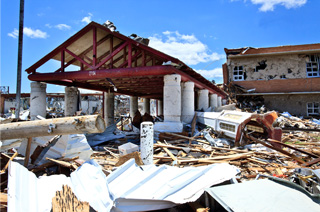
The district was home to 7,700 students, of whom more than 3,000 had lived in the path of the storm. In addition to Joplin High, five additional schools had been destroyed and others had been badly damaged. More than 4,200 students were left without a school to attend. And the system was supposed to reopen in August—just 87 days after the storm. There wouldn't be time to rebuild everything, so the city was forced to make do.
Elementary students from one school were assigned to an 84-year-old building that had previously sat unused. Middle schoolers attended classes in an industrial park. The high school was split in two, with juniors and seniors headed for a converted shopping mall.
But as Sue Adams said, the scrambling to bring the school system back offered opportunity for innovation, as well. It started with the reimagined high school.
"All the books were destroyed, so they’re going forward with no text books," Sue said. "Every student got a laptop. The school is so modern and open with huge collaborative areas. It’s so different from the old brick and plaster high schools that most of us went to."
Julia Lewis is a senior at Joplin High, and the student body president. She said the changes have been a major adjustment for teachers and students.
"We are supposed to be completely paperless," she said. "All of the teachers have websites now where they post assignments and we file homework." In fact, the only classes with text books are the Advanced Placement courses.
In April, the voters of Joplin approved a $62 million bond to continue the construction of new schools and the repair of existing facilities. On May 21, 2012, the class of 2012 will graduate, on time—President Obama will be their commencement speaker. The next day, district will break ground on the new, permanent high school, which is slated to open in 2014.
"FEMA was an absolute champion."
In the days after the storm, volunteers and federal disaster teams from across the country poured into Joplin.
As part of the response, more than 13 federal agencies had staff on the ground in the community, and at its height, more than 820 FEMA employees were working in Joplin. Federal and state emergency officials established four joint task forces to manage the largest recovery priorities—housing, debris removal, schools, and critical infrastructure.
Just 45 minutes after the tornado touched down, the Red Cross opened a shelter in the Missouri Southern State University gymnasium, which became a home for displaced residents. The college also became the main staging location for many first responders. Police, fire fighters, and search-and-rescue teams lived in campus dorms, and the college housed the federal Disaster Mortuary Team working to identify victims.
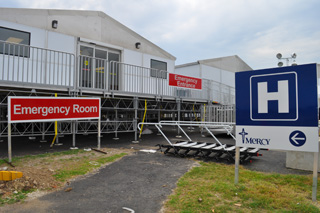
Within a week, a temporary hospital was up and running to replace the surgical capacity lost when St. John's Regional Medical Center was destroyed. After three months, the field hospital was upgraded to a modular structure, and less than nine months after the storm, a component hospital was in place—with 120 beds for patients.
Rob O'Brian, the president of the Joplin area of Chamber of Commerce said, "FEMA was an absolute champion."
FEMA established 15 temporary housing sites throughout the Joplin metro area, which became home to some 586 families and households at its peak. Over the past year, the agency provided nearly $21 million in grants to help victims pay for home repairs, temporary housing, and other critical disaster-related needs.
The Small Business Administration has approved more than $41.3 million in low-interest disaster loans. Government teams have established four Disaster Recovery Centers and a Multi-Agency Resource Center to allow those affected by the storm to meet face to face with recovery specialists. So far, those specialists worked with more than 7,500 individuals from the Joplin community.
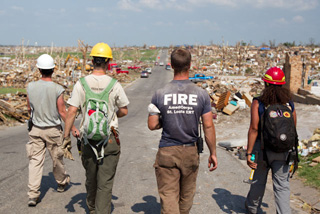
AmeriCorps also made long-term commitment to the recovery efforts. In the past year, more than 350 AmeriCorps members from across the United States have served in Joplin—removing tons of debris, helping homeowners with casework, coordinating donations, and operating distribution warehouses. They've also helped to coordinate the broader volunteer effort. And one year after the tornado, more than 25 AmeriCorps members are still living in Joplin, helping residents with legal services and continuing the effort to rebuild.
And the biggest story, of course, is that of the volunteer response—which was nothing short of extraordinary.
More than 126,800 individuals from across the country put in some 755,300 hours of community service in the Joplin area in the year since the tornado. Their efforts in everything from clean-up and repairs to home construction represent more than 82 years of community service.
Julia Lewis, the student body president, said,
But one project in particular is helping the people of Joplin look past the immediate recovery work and begin to plan for the type of community they want their city to be—the Citizens Advisory Recovery Team. Jane Cage became the program's leader.
Designed for citizens, by citizens
Jane Cage is the chief operating officer of Heartland Technology Solutions—an IT company—and has lived in Joplin since 1978. In years past, she'd been a volunteer in recovery efforts for other disasters around the Midwest.
"I went to Greensburg, Kansas after that tornado…and then I went to Cedar Rapids [Iowa] after there had been a lot of flooding there," she said. "Never did I imagine that I could leave the house and do that kind of work within 10 minutes of home."
In her hometown, Jane's opportunity to serve came at the suggestion of FEMA. About two weeks after the storm, the agency's long term recovery group came to Joplin to meet with city leaders. They stressed the importance of giving citizens a role in the recovery process.
The Citizens Advisory Recovery Team was born from those discussions. By June 30, CART had decided to focus on four policy areas: housing and neighborhoods, infrastructure and environment, schools and public facilities, and economic development.
Their first order of business was to gather public input. Eight weeks after the tornado, while many were still trying to back on their feet, the CART leaders asked their friends and neighbors to begin thinking about the future.
"We had about 350 people come that day and I could recognize people in the crowd who had lost people that they loved, people who had lost their houses, but they cared enough to come that day and think ahead," Jane said.
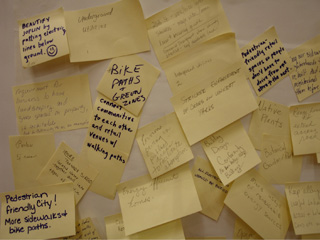
They distributed yellow sticky notes to the crowd and asked people to write down their thoughts. They received more than 1,000 suggestions. Then, working with FEMA, they compiled those notes into a book that they distributed throughout the community—to spark further discussion.
The result of the feedback they received helped the CART leaders flesh out the ideas for recovery in their four areas of focus, and as Sue Adams remembers, it became a blueprint for helping the community move forward.
"They had a meeting with the city councilmen of Joplin...the school board and the chambers of commerce," she said. "These boards unanimously passed the recommendations of the Citizen’s Advisory Committee for the designs of what they thought the city of Joplin should do."
"We didn’t wait for people to help us"
When the tornado came through Joplin, 553 businesses were damaged or completely destroyed. Today, 446 of those employers have reopened or they're in the process of doing so. Even though 33 companies have indicated that they don't plan to rebuild, 21 new businesses have opened shop.
As the vice president of mission, ministry, and advocacy at St. John's Regional Medical Center, the hospital destroyed by the storm, Terry Wachter has had a firsthand view of the recovery process:
Since the tornado, the city of Joplin has issued nearly 4,000 building permits for residential repairs and new construction and another 403 permits for commercial properties, including new apartment complexes.
Because so many were displaced by the storm, Terry has been part of a group organizing community dinners, which give those who once lived beside one another an opportunity to check in and socialize.
She said, "We hear things like, 'I hadn’t seen my neighbors – this is a chance for me to see my neighbors again, this friend or that neighbor.'"
Sue Adams has seen that same kind of resiliency and credits this fellowship as one of the reasons for Joplin's recovery. "You know what’s amazing? People are moving here. People that came to help are coming back and staying," she said. "We’re not going to let it beat us. We going to come back and we’re going to come back better than ever."
Indeed Joplin Mayor Mike Woolston told CBS news that 88 percent of the people displaced by the storm are still living within 25 miles of the city. When education officials prepared to open the schools after the tornado, they expected a marked decline in enrollment. Instead, they told the Associated Press that 95 percent of students returned to attend classes.
On August 16, 2011, St. John's Regional announced plans to build a new 327-bed facility about three miles from the building destroyed by the storm. In January, the old building was demolished and a four-foot wooden cross that hung on the wall of St. John's was driven to the site of the new facility for a groundbreaking ceremony.
Sue Adams says the hospital and the schools became, "the icon of the rebuilding." She said. "There was no pause. They were immediately doing everything that they could to be a vital part of the community and a vital part of the rebuilding."
The story of the effort to rebuild Joplin isn't about one group of volunteers, a set of nonprofits, or a single government agency performing something miraculous. It's thousands of people working together—federal disaster teams alongside local first responders, volunteers from out-of-state working side by side with the family from across the street, the U.S. Small Business Association and the local Chamber of Commerce, FEMA and the Joplin city school system. And the important thing is that it's a story that continues to unfold.
"We are stronger. Everyone has a lot more pride in our town," Julia Lewis says. "When we were thinking about college, we couldn’t wait to get out. We never thought Joplin was anything special, but seeing how we responded to something that tore our community apart has brought us together and made us realize how lucky we are to live here. We didn’t wait for people to help us—we jumped right now and got started. It is something everyone in Joplin can be proud of. We can do anything and we can help each other because that is how strong we are."
By Matt Compton, Deputy Director of Online Content for the Office of Digital Strategy
Related News
-
May 22, 2013 03:15 PM EDT
President Obama Responds to the Tornadoes in Oklahoma
-
May 26, 2013 3:12 PM EDT
President Obama Tours Tornado Damage in Moore, Oklahoma: "We've Got Your Back"
